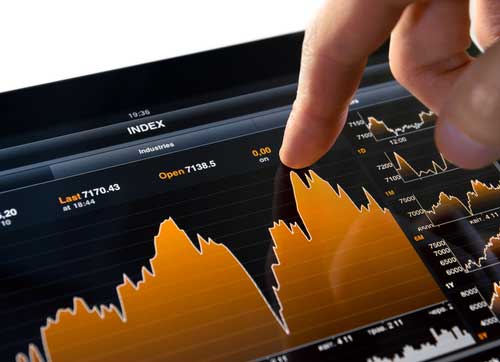In today’s policy meeting, the Reserve Bank of Australia kept the Cash Rate at 4.10 per cent. Governor Lowe stated that higher rates are helping to lower inflation, which has passed its peak but remains too high. In response, the Australian Dollar fell against most other currencies after Lowe warned that further tightening is possible.
While the global stock markets are mostly lower since the Asian open, most indices were lower at yesterday’s New York close, and the broader market environment remains latently bullish.

Over the short term, the Australian Dollar has been the weakest currency on the Forex market. In contrast, the Swiss Franc has been the strongest currency, putting the AUD/CHF cross under scrutiny. Trend traders and yield traders will likely be interested in being long on the USD/JPY currency pair since it continued to advance yesterday and remains within a valid long-term upward trend.
Several rallies have taken place regarding commodities, including WTI Crude Oil and Brent Crude Oil, which reached long-term highs last Friday and interest long-term trend traders. Crude Oil has held its ground since Friday’s close, suggesting it will rise to new highs.
After repeatedly failing at the resistance level confluent with $1.950, gold’s recent advance appears to have stalled for some time.
The Australian GDP data will be released tomorrow, and it is expected to show a 0.3% increase for the quarter.
Today’s Market Expectations
Taking centre stage this week are two major central banks that will be discussing central bank policy. The Reserve Bank of Australia (RBA) meeting was already held earlier today, and it maintained its policy rate at 4.10%, as widely expected, while the Bank of Canada (BOC) meeting will take place later in the week. Philip Lowe, who will be taking over as governor from Michele Bullock in September, announced the policy announcement at the RBA.
In addition, the Bank of Canada is scheduled to announce its policy decision on Wednesday. Analysts expect the BOC’s policy rate will also remain unchanged at 5.00%. Neither central bank is expected to alter its current interest rate levels immediately.
Yesterday, the price action was slow, although it followed the pattern we saw most of last month, with the US dollar dipping lower during the morning and reversing higher again. Which, in the end, tried to close the week on the right foot after the reversal on Friday afternoon. We opened several trading signals, although they remained open until today as the trading range was small.

Gold Heading to the 200 SMA Again
Gold was quite bullish during most of August, but over the past two weeks, there has been a noticeable reversal in its direction. Several factors are contributing to the shift in momentum, including the weakening labour market conditions. Initially, gold briefly dipped below $1,900.
As buyers returned to the market, a more optimistic outlook for gold resulted in a $1,953 price increase by Friday afternoon.
Nevertheless, as the price approached the 100-day Simple Moving Average (SMA) represented by the green line, it encountered significant resistance. Gold appears to be heading lower after being overbought earlier, but the 200 SMA (purple) has been acting as support, so let’s see if this MA will hold the price again.


